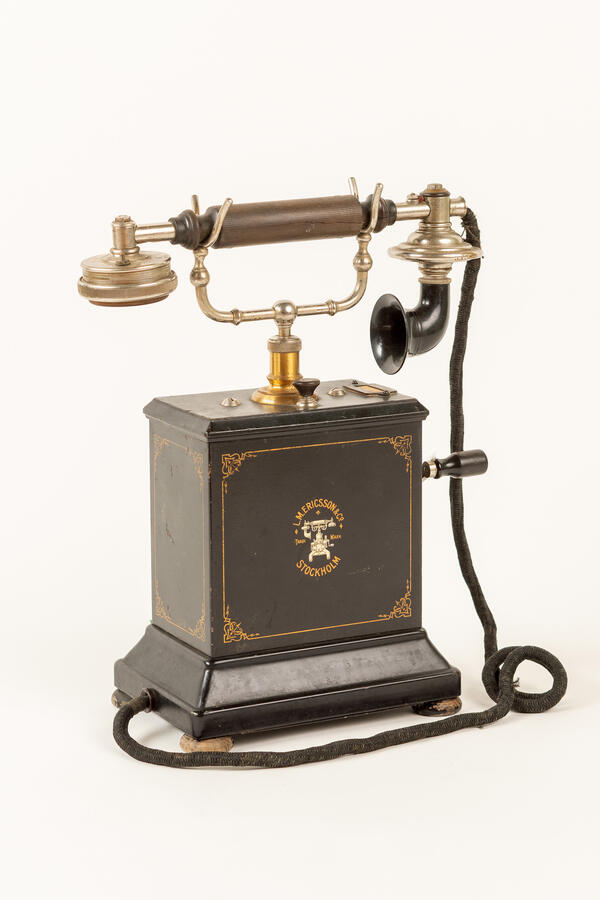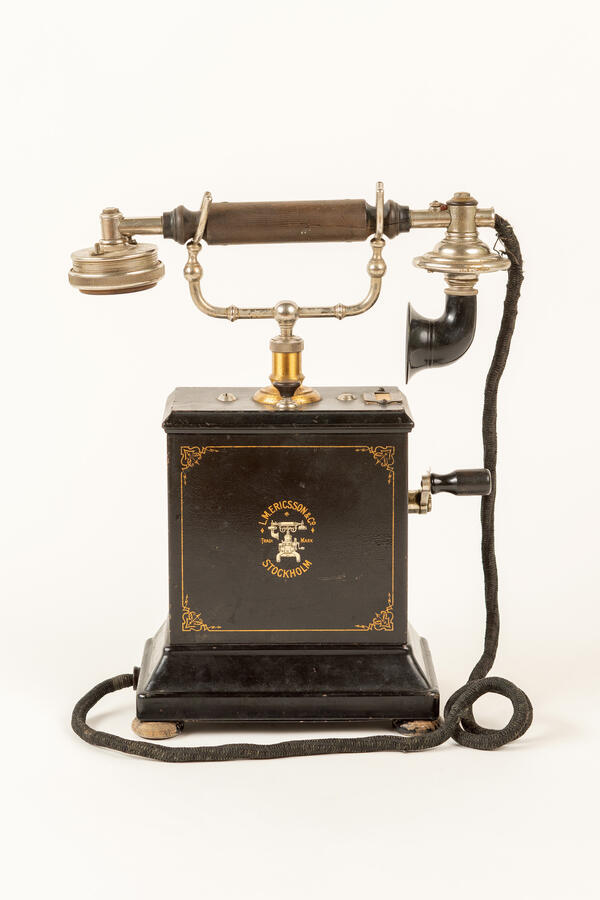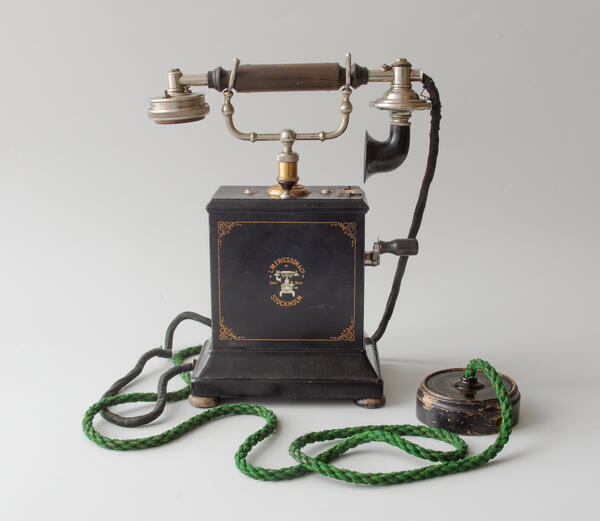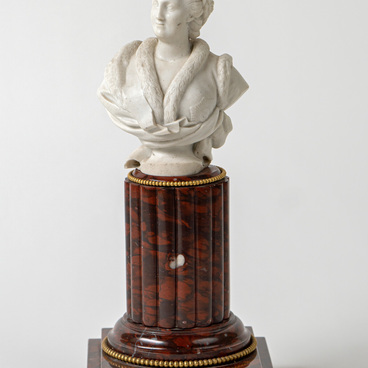Telephone communications in the imperial palaces were of great importance. The first telephone lines were laid in 1881 in the Gatchina Palace, where Alexander III and his family moved at the end of March. Telephone lines were also installed in other imperial residences. All the telephone equipment was manufactured in St. Petersburg at the Ericsson (now Krasnaya Zarya), Heisler, and Siemens & Halske factories.
In the Alexander Palace the telephone exchange was located in the palace basement. Two officials of the Palace Police were constantly on duty there, listening to all telephone conversations. In addition, two telephone booths were installed in the basement for the use of an extensive staff of palace employees.
According to inventories and photographs, there were few telephones in the living quarters of the Imperial family in the Alexander Palace. At least there were none in the two studies of Nicholas II (the State and Working studies). Apparently, in the official work practices of the first persons of that time it was customary to receive only personal reports. The only telephone in the Tsar’s quarters was in the Valet’s Room.
In the Empress’ Rooms there were more telephones. In Alexandra Feodorovna’s Palisander Drawing Room there were two telephone sets on a side-cabinet. Since 1914 one of them served exclusively for communication with the Headquarters of the Commander-in-Chief of the Russian Army. In the Mauve Room, where the Empress spent most of her day, there was a desk with another telephone.
In the Children’s Rooms on the upper floor of the Alexander Palace, there was only one telephone set, located in a pass-through room, next to the pantry.
The desk telephone on display was manufactured at the Swedish L.M. Ericsson & Co. factory in Stockholm in the 1910s. The telephone model, CG 400 CB, appeared in 1909. The letters CB (central battery) mean that the telephone set worked in a manual (non-automatic) communication system. In the CB system, a central battery was located at the telephone exchange. The machine communicated directly with the telephonist, who manually connected the caller to the recipient. The telephonist phoned the caller by removing the receiver from the lever in the central battery system. With the advent of the automatic communication system (ATS), manual telephones gradually became obsolete. Such telephones were produced until 1921, when a dial pad was added to the model for use with the ATS system.
In the Alexander Palace the telephone exchange was located in the palace basement. Two officials of the Palace Police were constantly on duty there, listening to all telephone conversations. In addition, two telephone booths were installed in the basement for the use of an extensive staff of palace employees.
According to inventories and photographs, there were few telephones in the living quarters of the Imperial family in the Alexander Palace. At least there were none in the two studies of Nicholas II (the State and Working studies). Apparently, in the official work practices of the first persons of that time it was customary to receive only personal reports. The only telephone in the Tsar’s quarters was in the Valet’s Room.
In the Empress’ Rooms there were more telephones. In Alexandra Feodorovna’s Palisander Drawing Room there were two telephone sets on a side-cabinet. Since 1914 one of them served exclusively for communication with the Headquarters of the Commander-in-Chief of the Russian Army. In the Mauve Room, where the Empress spent most of her day, there was a desk with another telephone.
In the Children’s Rooms on the upper floor of the Alexander Palace, there was only one telephone set, located in a pass-through room, next to the pantry.
The desk telephone on display was manufactured at the Swedish L.M. Ericsson & Co. factory in Stockholm in the 1910s. The telephone model, CG 400 CB, appeared in 1909. The letters CB (central battery) mean that the telephone set worked in a manual (non-automatic) communication system. In the CB system, a central battery was located at the telephone exchange. The machine communicated directly with the telephonist, who manually connected the caller to the recipient. The telephonist phoned the caller by removing the receiver from the lever in the central battery system. With the advent of the automatic communication system (ATS), manual telephones gradually became obsolete. Such telephones were produced until 1921, when a dial pad was added to the model for use with the ATS system.





